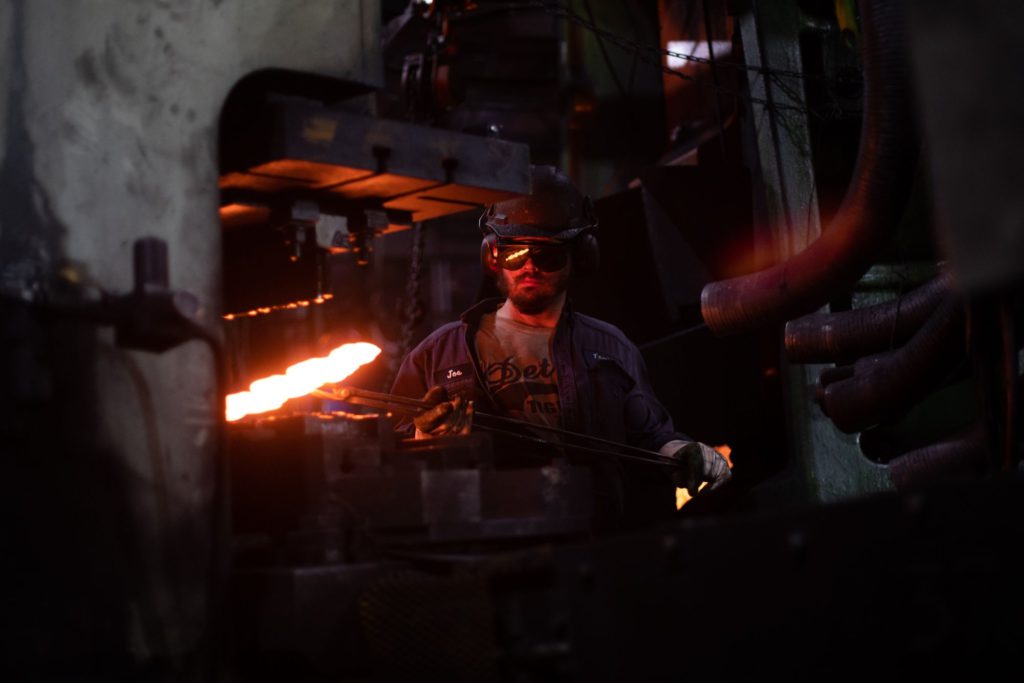(Bloomberg) — Sign up for the New Economy Daily newsletter, follow us @economics and subscribe to our podcast.
Persistent supply chain challenges continued to weigh on U.S. manufacturers in October, lengthening supplier delivery times and bloating a measure of inventories.
The Institute for Supply Management’s gauge of factory activity fell to 60.8 from 61.1 in September, according to data released Monday. Readings above 50 indicate expansion. The median projection in a Bloomberg survey of economists had called for 60.5.
ISM’s gauge of supplier deliveries rose to a five-month high in October, indicating longer lead times faced by producers for raw materials. Labor shortages, intermittent shutdowns and record goods imports have overwhelmed the nation’s ports and delayed deliveries.
That’s also contributed to a sharp rise in the group’s inventory index, which swelled to its highest level since 1984. The gauge also captures growth in work-in-progress inventories and challenges distributing finished goods.
“Companies and suppliers continue to deal with an unprecedented number of hurdles to meet increasing demand,” Timothy Fiore, chair of the ISM manufacturing business survey committee, said in a statement.
“All segments of the manufacturing economy are impacted by record-long raw materials lead times, continued shortages of critical materials, rising commodities prices and difficulties in transporting products,” Fiore said.
The average lead time for materials used in the production process rose to 96 days in October, the highest in data back to 1987. Average lead time for supplies used for maintenance, repairs and operations climbed to 49 days, also a record.
Meantime, new orders eased, which helped to slow the pace of backlog growth. While ISM’s measure of production was little changed, the bookings gauge dropped to 59.8, its weakest level since June of last year.
Materials costs continue to climb. A gauge of prices paid rose to a three-month high of 85.7 in October.
Sixteen manufacturing industries, led by apparel, furniture and textiles, reported growth last month.
Select ISM Industry Comments
“Global supply chain issues continue. Getting anything from China is near impossible — extreme delays. Microchip and circuit breaker shortages continue and are expected to continue into 2022.” – Computer & Electronic Products
“Business is getting stronger, but the supply chain is getting worse every day.” – Chemical Products
“Strong sales continue; however, we have diverted chips (semiconductors) to our higher-margin vehicles and stopped or limited the lower-margin vehicle production schedules.” – Transportation Equipment
“We are seeing an increase of capital equipment with life spans of more than 10 years in the fourth quarter.” – Fabricated Metals
“Business remains strong, with brisk incoming orders. We have become much more supply driven versus demand driven, due to shortages of labor, materials and freight. Costs continue to increase on all fronts, and we are considering our third price increase of the year for our customers.” – Furniture
“Labor is still difficult for our suppliers to obtain, and labor costs are rising.” – Machinery
“My prediction is that 2022 will be very similar to 2021 — similar demand, constrained supply, restricted logistics and rampant inflation.”- Plastics & Rubber
Manufacturers do appear to be having some success increasing factory headcounts, with ISM’s measure of employment rising to a three-month high of 52.
The figure precedes the government’s monthly jobs report at the end of this week. Nonfarm payrolls are expected to rise by 450,000 in October, while factories added almost 30,000 jobs.
(Adds lead time in days)
More stories like this are available on bloomberg.com
©2021 Bloomberg L.P.











